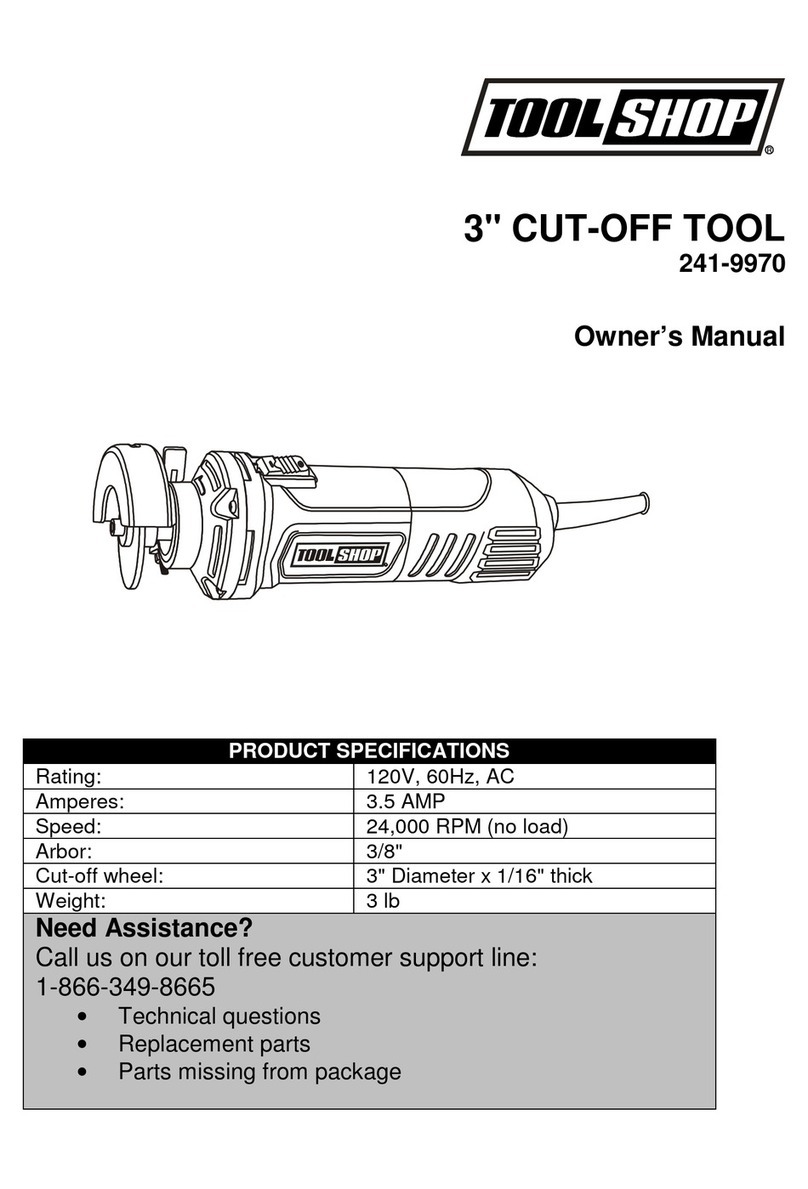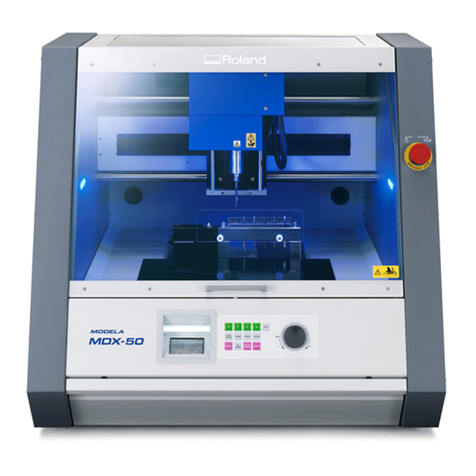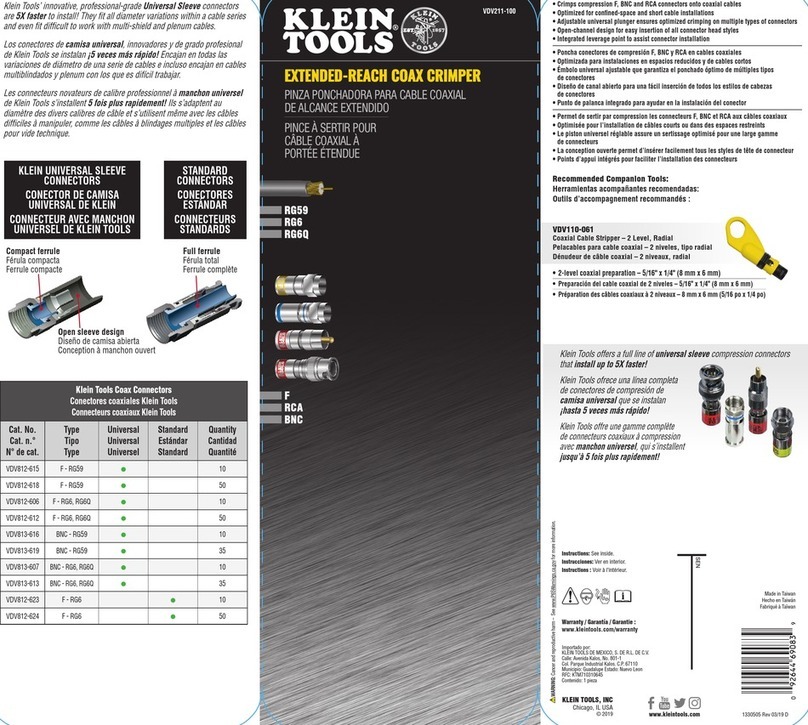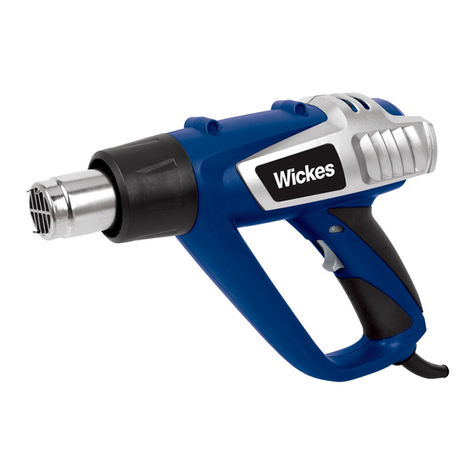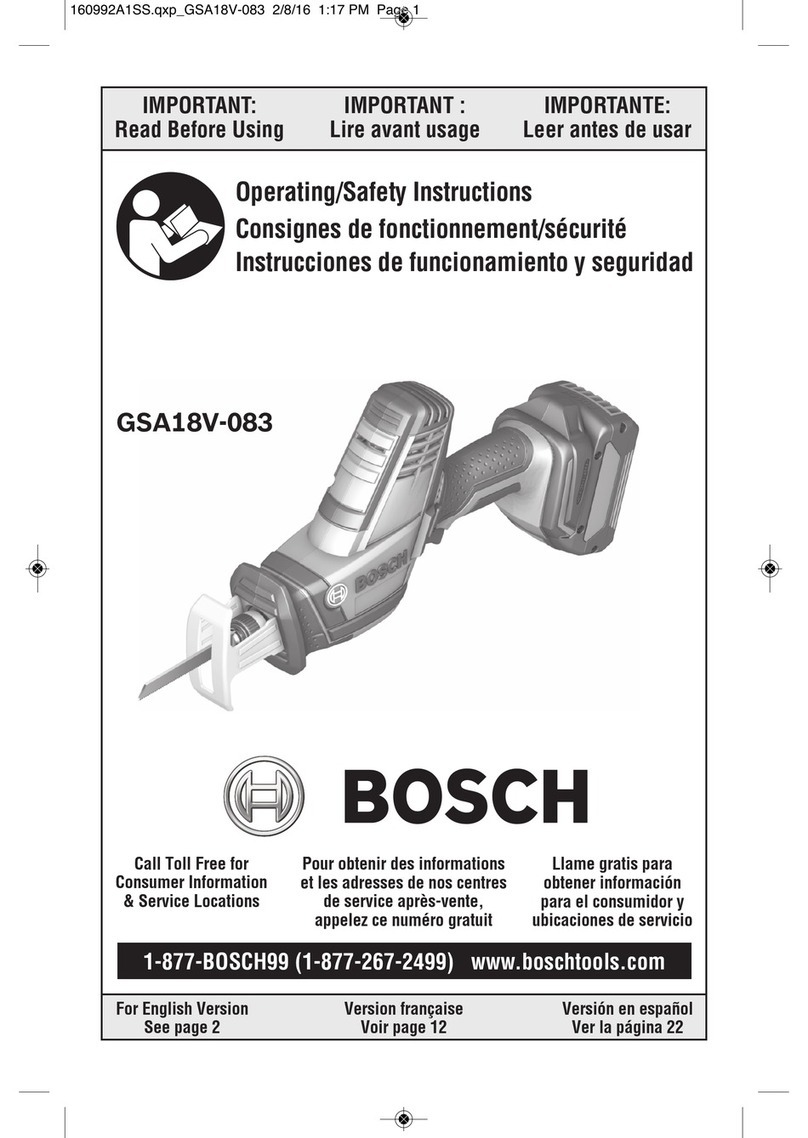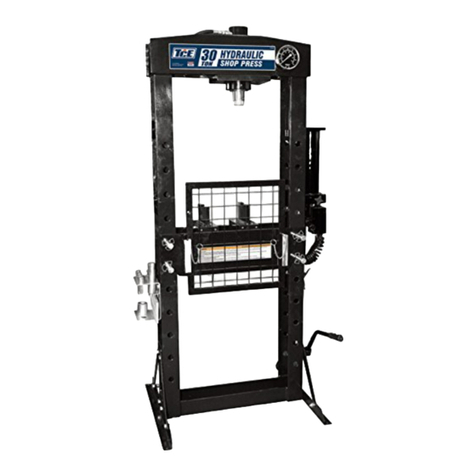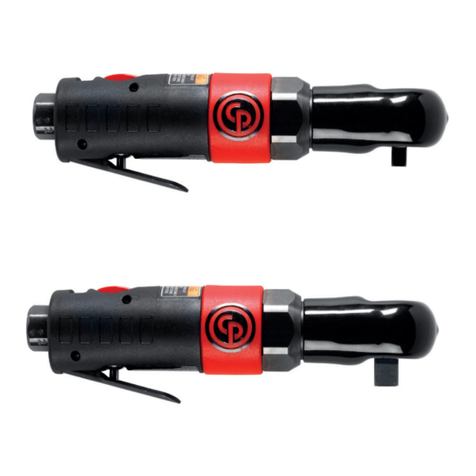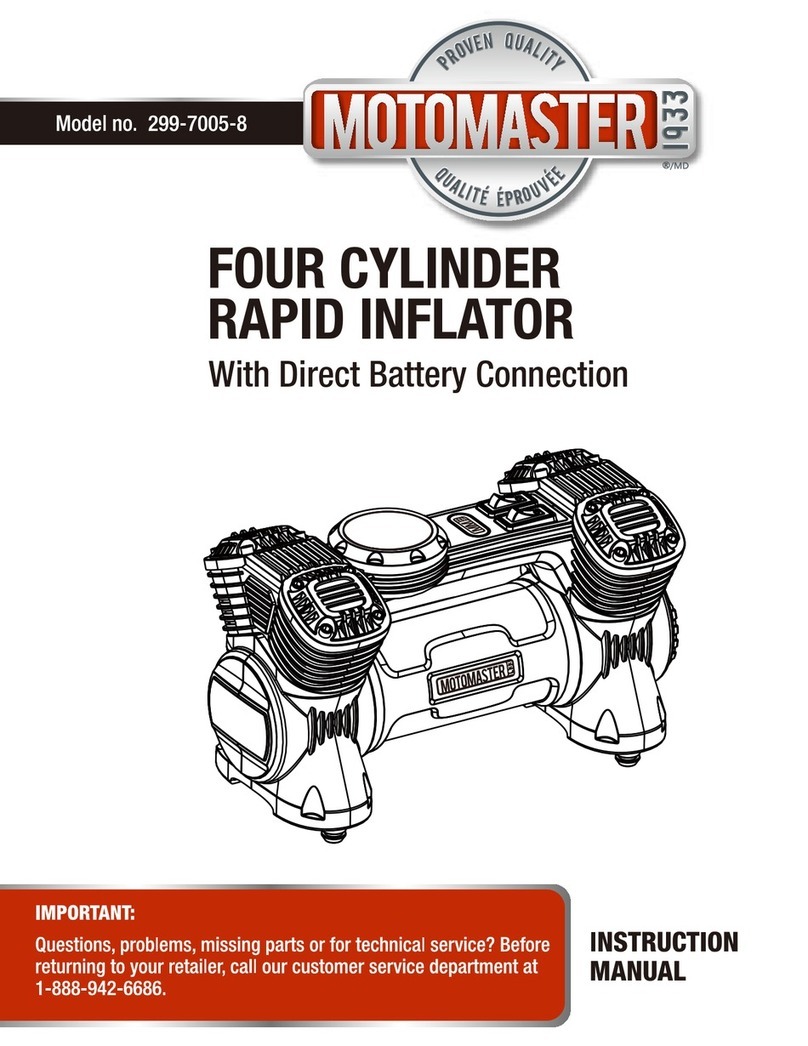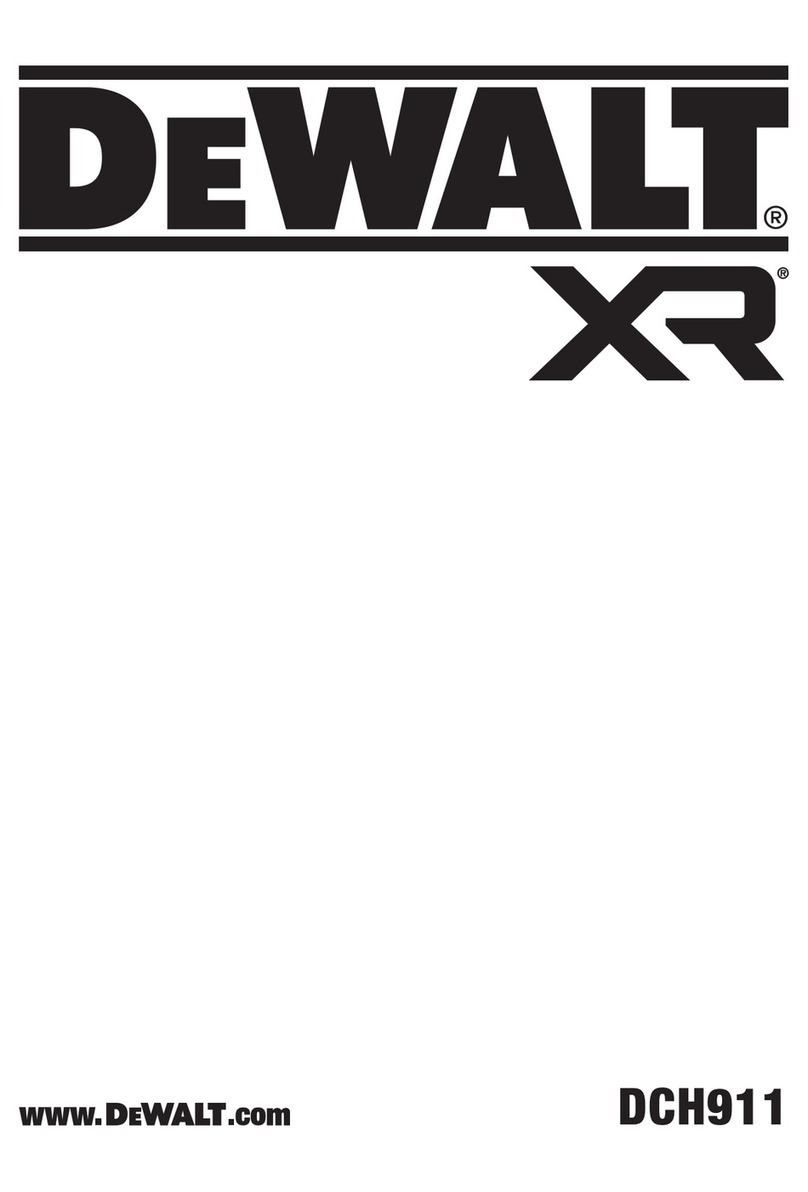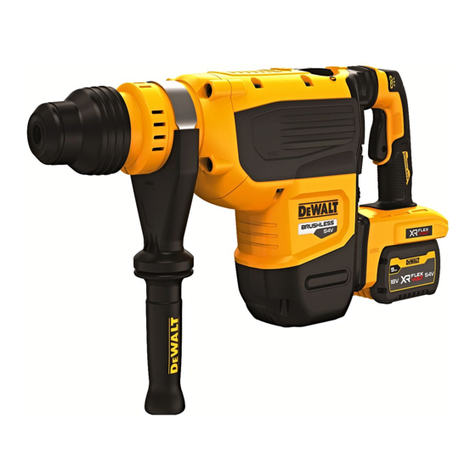GCE FIT+ User manual

GCE CUTTING & WELDING TECHNOLOGIES
MACHINE CUTTING TORCH; INSTRUCTION FOR USE
MASCHINENSCHNEIDBRENNER; GEBRUIKSAANWIJZINGEN
CHALUMEAU DE COUPE MACHINE; MANUEL D’INSTRUCTION
SNIJBRANDERTOORTS; BETRIEBSANLEITUNG
SOPLETE DE CORTE A MÁQUINA; INSTRUCCIONES DE USO
CANNELLO DA TAGLIO A MACCHINA; ISTRUZIONI PER L’USO
MAÇARICO CORTADOR DE MÁQUINAS; INSTRUÇÕES DE UTILIZAÇÃO
ARZĂTOR DE TĂIERE MECANIZATĂ; INSTRUCȚIUNI DE UTILIZARE
STROJNÍ ŘEZACÍ HOŘÁK; NÁVOD K POUŽITÍ
GÉPI LÁNGVÁGÓ PISZTOLYOK; HASZNÁLATI ÚTMUTATÓ
MASZYNOWY PALNIK DO CIĘCIA; INSTRUKCJA OBSŁUGI
MASKINSKÄRBRÄNNARE; BRUKSANVISNING
KONELEIKKAUSPOLTIN; KÄYTTÖOHJE
МАШИННАЯ РЕЖУЩАЯ ГОРЕЛКА; ИНСТРУКЦИЯ ПО ЭКСПЛУАТАЦИИ
机用割炬; 使用说明
EN
DE
FR
NL
ES
IT
PT
RO
CS
HU
PL
SV
FI
RU
ZH

2/120
EN
The purpose of this operating manual is to enable the torches to be used safely
and properly, according to regulations. Reading and observance of the operat-
ing manual helps to avoid hazards prevent downtimes and increases the relia-
bility and service life of the equipment.
The Operating manual must be available ready for use during operation.
Safety information, see also section 3.
In case of doubt please consult the manufacturer.
1. DESCRIPTION
1.1. DESCRIPTION OF THE MODEL TYPE
The machine cutting torches are designed either with injector mixing system
or with the system of mixing in the nozzle (nozzle mix).
They conform to the requirements of EN ISO 5172 and are produced and tested
according to current engineering guidelines. The machine cutting torches with
“A” marking shall be used with acetylene as a fuel gas and torches with “P”
marking shall be used with fuel gases propane, propylene, ethylene, natural gas
(methane), propane-butane, LPG and methyl acetylene/propadiene mixtures.
2. APPLICATION
2.1. PROPER USE ACCORDING TO GUIDELINES
2.1.1. The machine cutting torches must only be used for flame (oxygen) cutting
on flame (oxygen) cutting machines! The following GCE cutting nozzles can be
used in connection with the torches:
CUTTING TORCH CUTTING NOZZLES
Type
Mixing type
Fuel gas type
Standard
High Speed
High
Performance
Rapid cutting
Heavy duty
FIT+ Injector A ASF ARC
PMY PSF PRC
BIR+ Injector A AC ASD AHD
PMY PUZ PSD PHD
FIT,
Jetstream,
BM31
Injector A MA133 JETEX
PMY MP133 PROPEX
YMY133 PROPEX
ENGLISH
INSTRUCTION FOR USE: MACHINE CUTTING TORCH

3/120
EN
CUTTING TORCH CUTTING NOZZLES
Type
Mixing type
Fuel gas
type
Standard
High Speed
High
Performance
Rapid cutting
Heavy duty
BGR, X541 Nozzle
mix
A MCA AMD TRITEX
PMY MCP/
K50/K70
PUZ
PNMH
Information concerning applications, working parameters and ordering informa-
tion of the above-mentioned cutting nozzles please find in the Charts of cutting
parameters, in GCE product catalogue or on www.gcegroup.com.
2.2. IMPROPER APPLICATION OF THE DEVICE
Different use as above-mentioned application of the machine cutting torches is
not allowed. Application with different working mediums, gases and gas pres-
sures as above mentioned is also not allowed.
3. BASIC SAFETY INSTRUCTIONS
3.1. All details labelled with shall be regarded as important items of safety
information.
3.2. The handling of oxy-fuel machine cutting torches, fuel gases and oxygen
requires professional knowledge and the observance of this operating manual!
Training and safety instruction for the operating personnel is required.
3.3. Possible hazards at the workplace should be considered before initial oper-
ation, e.g. fire hazards due to highly flammable material, gases or liquids. Do not
allow the mixture of fuel gas and oxygen to flow out from the torch not ignited.
3.4. Torches conform to the requirements of EN ISO 5172 and are manufactured
and tested according to current engineering guidelines. No changes or modifi-
cations to the torches should be made without approval from the manufacturer.
With incorrect handling and improper use hazards for the operator and for other
personnel as well as damage to the torch and system may arise.
3.5. Standards and regulations to be observed:
• All national safety standards and rules of accident prevention as well as tech-
nical rules and principles shall be respected by the operator.
• GUV-R 500, section 2.26, Welding, cutting and allied processes (Germany
only).
• EN ISO 5172, EN ISO 3821, EN 560, EN ISO 5175-1.

4/120
EN
4. MARKING IN ACCORDANCE WITH EN ISO 5172
5. USING OF CUTTING TORCH
5.1. PREPARATION
All parts wetted by oxygen should be free of oil and grease due to explosion
hazards! Check whether all threaded joints and sealing surfaces, e. g. cones
and balls, are clean and undamaged!
5.1.1. FITTING OF CUTTING AND HEATING NOZZLES
Before fitting of the nozzles check the front face of the torch head and the noz-
zles O-rings, if they are clean and without any damage.
Tool-Free nozzles (FIT+, FIT+ two, FIT+ three)
• Place the cutting nozzle into the heating nozzle
and put the heating nozzle to the torch head.
• The heating nozzle pins shall lock in the grooves
in the torch head.
• Turn the heating nozzle until end stop is reached
– pins get the grooves ends. See please also the
picture.
O Oxygen
P Propan (LPG)
M Methane, Natural gas
Y Mixed fuel gases
A Acetylene
FG Fuel Gas
H-O Heating Oxygen
C-O (S-O) Cutting Oxygen
F03A GCE data code
II Nozzle mixing
Injector mixing
Producer

5/120
EN
1.
Two/three cone nozzles or flat seat nozzles with sleeve nut (BGR,
X541, FIT, Jetstream, BM31 and similar)
• Place the cutting nozzle into the heating nozzle and put the heating nozzle
to the torch head.
• Put the nut over the nozzle and fix it in the thread manually.
• Tighten the nut with proper wrench using torque 22NM.
• Always use and counter-wrench as shown on the picture to avoid twisting
of the internal tubes which could cause gas leakage or equipment damage.
1.
Cutting and heating nozzles with thread (BIR+ and similar)
• Tighten the cutting nozzle into the heating nozzle with proper wrench by
torque 5NM.
• Tighten the heating nozzle by proper wrench using torque 15NM.
• Always use and counter-wrench as shown on the picture to avoid twisting
of the internal tubes which could cause gas leakage or equipment damage.
2.
2.
3.

6/120
EN
5.2. START OPERATING OF THE MACHINE CUTTING TORCH
5.2.1. The proper parameters to set up the optimal cutting process are to be
found in the Charts of cutting parameters, in GCE product catalogue or at
www.gcegroup.com. All the recommended pressure values are to be measured
at the torch inlet and at the gas flow.
5.2.2. IGNITION AND ADJUSTMENT OF THE HEATING FLAME
• The operating pressures for the heating oxygen and fuel gas should be ad-
justed with open torch valves.
• Ignite the outgoing mixture. With correct pressure adjustment carburizing
flame is produced.
• A proper neutral heating flame is adjusted with the fuel gas valve to suit the
cutting task.
• The heating oxygen valve remains fully open.
5.2.3. ADJUSTMENT OF THE CUTTING OXYGEN
The adjustment values for the cutting oxygen pressure should be taken from
the Charts of cutting parameters for the relevant type of nozzle. The pressure
value must be present on the torch inlet. Check with a test pressure gauge if
necessary.

7/120
EN
5.2.4. CUTTING PROCESS INITIATION
Bring the torch to the initial cutting position and start locally heating the work-
piece to the ignition temperature, approximately bright red or yellow. Then open
the cutting oxygen valve and switch on the torch movement in the same time.
Cutting oxygen pressure should be increased stepwise, according to the pierc-
ing process recommendation.
5.2.5. CUTTING SPEED
The optimal cutting speed is given in the Charts of cutting parameters. Correct
setting can be seen from the slag production, from the almost vertical spray of
sparks and from the cutting noise.
5.3. SWITCHING OFF OF THE MACHINE CUTTING TORCH
The gas flow shall be closed in following sequence using either automated
mode with cutting machine valves or manual mode with shut off valves on the
torch:
1. Cutting oxygen
2. Fuel gas
3. Heating oxygen
6. OPERATION FAULTS AND MAINTENANCE
6.1. BACKFIRE
Reduction of the outlet flow velocity, e. g. due to contamination of the nozzles
when the torch is applied to the material (touching the plate or slag) or due to
operating faults especially reduced gas flow. The flame enters the torch and is
extinguished with a cracking sound. Switch off the torch, allow cooling by cutting
oxygen flow if necessary, readjust, ignite and operate again.
6.2. SUSTAINED BACKFIRE
With sustained backfire the flame enters the torch and continues to burn inside
at the mixing point. A whistling noise ensues. In this case immediately close
first the heating oxygen flow and then the fuel gas. Normally, sustained backfire
can be produced in the torch by incorrect operating pressures or overheated
or damaged equipment. Therefore, only use undamaged heating and cutting
nozzles and ensure proper sealing of the nozzles and torch head.
6.3.TORCH FAILURE
Do not operate the torch with leaks at the connections of the torch and nozzles
and with damage due to torch flashback, blocked nozzles etc., and replace the
torch with a properly working torch. Make sure before each cutting operation
that nozzles are properly tightened to the torch head. Stop operating immediate-
ly in case there is leakage/flame burning between nozzle and torch head. Such
effect can cause safety risk or equipment damage. If a repair is required, please
contact your GCE partner.

8/120
EN
7. SAFETY DEVICES ON THE TORCH
The machine cutting torches shall be used with flashback arrestors according to
EN ISO 5175-1 on the all gas inlets (fuel gas, heating oxygen and cutting oxygen).
The proper flashback arrestor types find please in GCE Machine cutting equip-
ment catalogue of spare- and wear- parts.
8. WASTE MANAGEMENT
In accordance with Article 33 of REACH GCE, s.r.o. as responsible manufacturer
shall inform all customers if materials containing 0.1% or more of substances
included in the list of Substance of Very High Concern (SVHC). The most com-
monly used brass alloys used for bodies and other brass components contain
2-3% of lead (Pb), EC no. 231-468-6, CAS no. 7439-92-1. The lead will not be
released to the gas or surrounding environment during normal use. After end
of life the product shall be scrapped by an authorized metal recycler to ensure
efficient material handling with minimal impact to environment and health. To
date we have no information that indicates that other materials containing SVHC
of concentrations exceeding 0.1% are included in any GCE product.
9. REPAIR AND GENERAL REMARKS
Only genuine GCE cutting nozzles and spare parts shall be used! The proper
functioning and safety of the equipment is only ensured if genuine replacement
parts are used! Product repairs shall only be provided by authorized GCE part-
ners! Liability cannot be accepted for the consequences of persons carrying
out their own repairs or modifications by the user or third parties without the
manufacturer’s permission!
10. WARRANTY
The Standard Warranty period is two years from date of receipt by the GCE
Customer (or if this is not known 2 years from time of the product manufacture
shown on the product).
The standard warranty is only valid for products handled according to Instruction
for use (IFU) and general industry good practice and standards.
MANUFACTURER:
GCE, s.ro. Tel : +420 569 661 111
Zizkova 381 Fax : +420 569 661 602
583 01 Chotebor http://www.gcegroup.com
Czech Republic © GCE, s.ro.

9/120
DE
Der Zweck dieser Bedienungsanleitung ist die Ermöglichung der sicheren und
korrekten Verwendung der Brenner im Einklang mit den Vorschriften. Das Lesen
und die Einhaltung der Bedienungsanleitung helfen, Risiken, Stillstandzeiten
vorzubeugen und die Zuverlässigkeit sowie die Lebensdauer der Anlage zu
erhöhen.
Die Bedienungsanleitung muss für die Verwendung während des Betriebs
verfügbar sein.
Sicherheitsinformationen, siehe auch Teil 3.
Eventuelle Zweifel konsultieren die bitte mit dem Hersteller.
1. BESCHREIBUNG
1.1. BESCHREIBUNG DES MODELLTYPS
Die Maschinenschneidbrenner sind entweder mit einem Einspritz-Mischsystem
oder mit einem System des Mischens in der Düse (Mischen in der Düse) konzip-
iert. Sie erfüllen die Anforderungen der Norm ČSN EN ISO 5172 und sind gemäß
den aktuellen, technischen Richtlinien hergestellt und getestet. Maschinensch-
neidbrenner mit der Kennzeichnung „A“ verwenden als Brenngas Acetylen und
Brenner mit der Kennzeichnung „P“ verwenden als Brenngas Propan, Propyl-
en, Ethylen, Erdgas (Methan), Propan-Butan, LPG und Methylacetylen-Propadi-
en-Gemische.
2. ANWENDUNG
2.1. VERWENDUNG IM EINKLANG MIT DEN ANWEISUNGEN
2.1.1. Maschinenschneidbrenner dürfen nur für das Schneiden mit der Flamme
(Sauerstoff) an Maschinen für das Gasbrennschneiden (Sauerstoff) verwen-
det werden! In Verbindung mit den Brennern können folgende Schneidbren-
nerdüsen GCE verwendet werden:
SCHNEIDBRENNER SCHNEIDDÜSE
Typ
Typ des
Gemisches
Typ
Brenngas
Standard
Hohe
Geschw.
Hohe
Leistung
Schnelles
Schneiden
Aufw.
Betrieb
FIT+ Injector A ASF ARC
PMY PSF PRC
BIR+ Injector A AC ASD AHD
PMY PUZ PSD PHD
DEUTSCH
GEBRAUCHSANLEITUNG: MASCHINENSCHNEIDBRENNER

10/120
DE
SCHNEIDBRENNER SCHNEIDDÜSE
Typ
Typ des
Gemisches
Typ
Brenngas
Standard
Hohe
Geschw.
Hohe
Leistung
Schnelles
Schneiden
Aufw.
Betrieb
FIT,
Jet-
stream,
BM31
Injector A MA133 JETEX
PMY MP133 PROPEX
YMY133 PROPEX
BGR,
X541
Nozzle mix A MCA AMD TRITEX
PMY MCP/
K50/
K70
PUZ
PNMH
Informationen zu den Anwendungen, Arbeitsparametern sowie Informationen
zur Bestellung der oben angeführten Schneiddüsen finden Sie in den Tabellen
der Schneidparameter, im Produktkatalog GCE oder unter www.gcegroup.com.
2.2. UNSACHGEMÄSSE VERWENDUNG DER ANLAGE
Eine von der oben angeführten Verwendung der Maschinenschneidbrenner
abweichende Verwendung ist nicht erlaubt. Ebenso unzulässig ist die Verwend-
ung mit anderen Arbeitsmedien, Gasen und Gasdrücken, als oben angeführt.
3. GRUNDLEGENDE SICHERHEITSHINWEISE
3.1. Alle mit gekennzeichneten Details sind als wichtige Sicherheitsinforma-
tionen zu erachten.
3.2. Der Umgang mit den Schneidbrennern einer Maschine, die als Brenngas
Sauerstoff verwendet, mit Brenngasen und Sauerstoff, erfordert fachliche Kennt-
nisse und die Einhaltung dieser Gebrauchsanleitung! Erforderlich sind Schulun-
gen und Sicherheitshinweise für das Bedienungspersonal.
3.3. Vor der ersten Inbetriebnahme sind insbesondere mögliche Gefahren am
Arbeitsplatz in Betracht zu ziehen, z.B. die Gefahr eines Brandes infolge hoch
brennbarer Materialien, Gase oder Flüssigkeiten. Lassen Sie nicht zu, dass aus
dem nicht gezündeten Brenner das Brenngas-Sauerstoff-Gemisch entweicht.
3.4. Brenner erfüllen die Anforderungen der Norm ČSN EN ISO 5172 und sind
gemäß den aktuellen, technischen Richtlinien hergestellt und getestet. Ohne
Zustimmung des Herstellers dürfen weder Änderungen noch Anpassungen der
Brenner vorgenommen werden. Bei einem unsachgemäßen Umgang und nicht
korrekter Verwendung können eine Gefahr für die Bedienung und weiteres Per-
sonal sowie eines Beschädigung des Brenners und des Systems sein.

11/120
DE
3.5. Normen und Vorschriften, die einzuhalten sind:
• Die Bedienung hat alle nationalen Sicherheitsnormen und Regeln der Unfall-
verhütung sowie die technischen Regeln und Grundsätze einzuhalten.
• GUV-R 500, Teil 2.26, Schweißen, Schneiden und verwandte Prozesse (nur
Deutschland).
• ČSN EN ISO 5172, ČSN EN ISO 3821, ČSN EN 560, ČSN EN ISO 5175-1.
4. KENNZEICHNUNG GEMÄSS ČSN EN ISO 5172
5. VERWENDUNG DES SCHNEIDBRENNERS
5.1. VORBEREITUNG
Wegen der Explosionsgefahr dürfen sämtliche, dem Sauersto ausgesetzten
Teile weder Öl noch Fett enthalten! Kontrollieren Sie, ob alle Gewindeverbind-
ungen und Dichtungsflächen, z.B. Kegel und Kugeln, sauber und unbeschädigt
sind.
O Sauerstoff
P Propan (LPG)
M Methan, Erdgas
Y Brenngasgemische
A Acetylen
FG Brenngas
H-O Heizsauerstoff
C-O (S-O) Schneidsauerstoff
F03A Datencode GCE
II Mischen in der Düse
Injektor-Mischen
Hersteller

12/120
DE
5.1.1. FITTING OF CUTTING AND HEATING NOZZLES
Before fitting of the nozzles check the front face of the torch head and the noz-
zles O-rings, if they are clean and without any damage.
1.
Düse mit zwei/drei Kegeln oder Düse mit flachem Sattel mit
doppelter Mutter (BGR, X541, FIT, Jetstream, BM31 u. Ä.)
• Setzen Sie die Schneiddüse in die Vorwärmdüse und setzen Sie die Vorwärm-
düse auf den Kopf des Brenners auf.
• Setzen Sie die Mutter auf die Düse und sichern Sie sie manuell im Gewinde.
• Ziehen Sie die Mutter mit dem richtigen Schlüssel bei einem Moment von 22
Nm fest.
• Verwenden Sie stets einen Gegenschlüssel, wie auf der Abbildung veran-
schaulicht, um ein Verdrehen (Torsion) der inneren Rohre zu verhindern, was
andernfalls das Entweichen des Gases oder die Beschädigung der Anlage zur
Folge haben könnte.
2.
Düsen ohne Notwendigkeit der Verwendung
von Werkzeug (FIT+, FIT+ two, FIT+ three)
• Setzen Sie die Schneiddüse in die Vorwärmdüse
und setzen Sie die Vorwärmdüse auf den Kopf des
Brenners auf.
• Die Zapfen der Vorwärmdüse müssen in den
Nuten im Kopf des Brenners blockiert werden.
• Drehen Sie die Vorwärmdüse bis an den Anschlag
– die Zapfen gelangen so an das Ende der Nuten.
Werfen Sie auch einen Blick auf die Abbildung.
Kopf
Nut
O-Ring
Schneiddüse
Zapfen
O-Ring
Vorwärmdüse

13/120
DE
2.
3.
1.
Schneid- und Vorwärmdüsen (BIR+ u. Ä.)
• Ziehen Sie die Schneiddüse mit dem richtigen Schlüsse in der Vorwärmdüse
bei einem Moment von 5 Nm fest.
• Ziehen Sie die Vorwärmdüsen mit dem richtigen Schlüssel bei einem Moment
von 15 Nm fest.
• Verwenden Sie stets einen Gegenschlüssel, wie auf der Abbildung veran-
schaulicht, um ein Verdrehen (Torsion) der inneren Rohre zu verhindern, was
andernfalls das Entweichen des Gases oder die Beschädigung der Anlage zur
Folge haben könnte.
5.2. INBETRIEBNAHME DES MASCHINENSCHNEIDBRENNERS
5.2.1. Die richtigen Parameter für die Einstellung des optimalen Schneidproz-
esses finden Sie in den Tabellen der Schneidparameter, im Produktkatalog GCE
oder unter www.gcegroup.com. Alle empfohlenen Werte des Drucks sind am
Eingang zum Brenner und am Gasdurchlauf zu messen.
5.2.2. ZÜNDUNG UND EINSTELLUNG DER VORWÄRMFLAMME
• Die Betriebsdrücke für den Vorwärmsauerstoff und das Brenngas sollten mit
geöffneten Ventilen des Brenners eingestellt werden.
• Zünden Sie das austretende Gemisch. Bei richtiger Einstellung des Brenners
bildet sich eine auohlende Flamme.
• Die richtige, neutrale Vorwärmflamme (Heizflamme) wird mit dem Ventil des
Vorwärmgases so eingestellt, dass sie der jeweiligen Schneidaufgabe ent-
spricht.
• Das Ventil des Vorwärmsauerstoffs bleibt voll geöffnet.

14/120
DE
5.2.3. EINSTELLUNG DES SCHNEIDSAUERSTOFFS
Die Einstellwerte für den Druck des Schneidsauerstoffs sind den Tabellen der
Schneidparameter für den jeweiligen Düsentyp zu entnehmen. Der Wert des
Drucks muss am Eingang zum Brenner anliegen. Im Falle des Bedarfs kontrolli-
eren Sie ihn mithilfe des Prüfmanometers.
5.2.4. ERÖFFNUNG DES SCHNEIDPROZESSES
Bringen Sie den Brenner in die Ausgangslage des Schneidens und beginnen Sie
mit dem lokalen Erwärmen des Werkstücks auf die Zündtemperatur, ungefähr
hellrot bis gelb. Öffnen Sie anschließend des Ventil des Schneidsauerstoffs und
schalten Sie die Bewegung des Brenners ein. Der Druck des Schneidsauerstoffs
sollte sich schrittweise je nach der Empfehlung des Prozesses des Stechens
erhöhen.
5.2.5. SCHNEIDGESCHWINDIGKEIT
Die optimale Schneidgeschwindigkeit ist in den Tabellen der Schneidparame-
ter angeführt. Die richtige Einstellung ist anhand der Produktion von Schlacke
ersichtlich, anhand des fast vertikalen Funkenflugs und des Lärms beim Sch-
neiden.
5.3. AUSSCHALTEN DES MASCHINENSCHNEIDBRENNERS
Der Gasdurchlauf wird in der nachstehenden Reihenfolge entweder mithilfe des
Automatikmodus mit den Ventilen der Schneidmaschine oder im Handbetrieb
mittels der Sperrventile am Brenner geschlossen.
Auohlende Flamme
während der
Zündung
Neutrale Flamme Neutrale Flamme
mit dem strömenden
Schneidsauersto
ca. 1 mm
Werkstück

15/120
DE
1. Schneidsauerstoff
2. Brenngas
3. Vorwärmsauerstoff
6. FUNKTIONSSTÖRUNGEN UND WARTUNG
6.1. RÜCKZÜNDUNG
Verringerung der Strömungsgeschwindigkeit am Ausgang, z.B. infolge der
Verunreinigung der Düsen beim Anlegen des Brenners an das Material (durch
Berührung der Platte oder der Schlacke) oder infolge von Betriebsstörungen,
insbesondere des verringerten Gasdurchflusses. Die Flamme tritt in den
Brenner und erlischt mit knallendem Geräusch. Schalten Sie den Brenner ab,
ermöglichen Sie im Bedarfsfalle die Kühlung durch Unterbrechung der Sauerst-
offströmung, nehmen Sie eine erneute Einstellung vor, zünden Sie und schalten
Sie erneut ein.
6.2. DAUERHAFTE RÜCKZÜNDUNG
Bei dauerhafter Rückzündung tritt die Flamme in den Brenner, wobei der Bren-
nprozess weiterhin im Innern an der Stelle des Mischens fortgesetzt wird. Es
ertönt ein Pfeifgeräusch. Schließen Sie in diesem Falle zunächst den Durchfluss
des Vorwärmsauerstoffs und anschließend des Brenngases. Normalerweise
kann die dauerhafte Rückzündung des Brenners bei unkorrektem Betriebsdruck
oder bei einer Überhitzung bzw. bei einer Beschädigung der Anlage eintreten.
Verwenden Sie daher nur unbeschädigten Vorwärm- und Schneiddüsen und
stellen Sie die ordentliche Dichtung der Düsen und des Brennerkopfes sicher.
6.3. STÖRUNG DES BRENNERS
Verwenden Sie keinen Brenner mit undichten Stellen an den Anschlüssen des
Brenners und der Düsen und mit einer Beschädigung infolge der Rückzünd-
ung des Brenners, verstopfter Düsen etc. und tauschen Sie den Brenner gegen
einen korrekt funktionierenden Brenner aus. Vergewissern Sie sich vor jedem
Schneiden, dass die Düsen ordentlich am Brennerkopf festgezogen sind. Im
Falle des Entweichens/Brennens der Flamme zwischen der Düse und dem Bren-
nerkopf stellen Sie die Arbeit mit dem Brenner sofort ein. Dieser Effekt kann
ein Sicherheitsrisiko oder eine Beschädigung der Anlage zur Folge haben. Die
allfällige Instandsetzung konsultieren Sie bitte mit einem GCE-Partner.
7. SICHERHEITSVORRICHTUNGEN AM BRENNER
Maschinenschneidbrenner sind mit Rückzündungssicherungen gemäß ČSN EN
ISO 5175-1 an allen Gaszuleitungen (Brenngas, Vorwärmsauerstoff und Schneid-
sauerstoff) zu verwenden. Die richtigen Sicherungen der Rückzündung finden
Sie im Katalog der Ersatzteile und jener Teile, die dem Verschleiß der Maschin-
enschneidanlage GCE unterliegen.

16/120
DE
8. UMGANG MIT ABFÄLLEN
Im Einklang mit Artikel 33 der Verordnung REACH hat die GCE, s.r.o. als verant-
wortungsbewusster Hersteller alle Kunden zu informieren, sofern die Materialien
0,1 % oder mehr Stoffe enthalten, die in der Liste besonders besorgniserregen-
der Stoffe (SVHC) umfasst sind. Die am meisten verwendeten Messinglegierun-
gen, die für Messingarmaturen und andere Messingkomponenten verwendet
werden, enthalten 2–3 % Blei (Pb), Nr. 231-468-6, CAS Nr. 7439-92-1. Bei nor-
maler Verwendung wird Blei weder in das Gas noch in das Umfeld freigesetzt.
Nach Ablauf der Lebensdauer muss das Produkt durch ein autorisiertes Recy-
cling-Unternehmen entsorgt (verschrottet) werden, um die effektive Entsorgung
des Materials mit minimalen Auswirkungen auf die Umwelt und die Gesundheit
zu gewährleisten. Zum heutigen Tage haben wir keinerlei Informationen, welche
darauf hinweisen würden, dass in einem jedweden GCE-Produkt weitere Materi-
alien mit SVHC in Konzentrationen von mehr als 0,1 % enthalten sind.
9. INSTANDSETZUNG UND ALLGEMEINE HINWEISE
Verwenden Sie nur Original-Schneiddüsen und Ersatzteile von GCE! Die rich-
tige Funktion und die Sicherheit der Anlage ist lediglich bei Verwendung von
Original-Ersatzteilen gewährleistet. Reparaturen des Produktes nur von den hi-
erzu berechtigten GCE-Partnern ausgeführt werden! Jedwede Haftung für die
Folgen der eigenen Instandsetzung oder Abänderung durch den Benutzer oder
durch Dritte ohne Zustimmung des Herstellers ist ausgeschlossen.
10. GARANTIE
Die Standard-Garantiefrist beträgt zwei Jahre ab dem Datum der Übernahme
durch den Kunden von GCE (oder, sofern nicht bekannt, 2 Jahre ab dem am
Produkt angeführten Herstellungsdatum).
Die Standardgarantie gilt lediglich für Produkte, mit denen gemäß der Ge-
brauchsanleitung (FU) und den allgemeinen, attestierten Verfahren und Normen
in der Branche.
HERRSTELLER:
GCE, s.ro. Tel : +420 569 661 111
Zizkova 381 Fax : +420 569 661 602
583 01 Chotebor http://www.gcegroup.com
Tschechien © GCE, s.ro.

17/120
FR
Le but de la présente notice d’utilisation est de permettre une utilisation cor-
recte et en toute sécurité des chalumeaux conformément à la réglementation.
Lire et respecter la notice d’utilisation permet de prévenir les risques, d’éliminer
les temps morts et d’augmenter la fiabilité et la durée de vie de l’équipement.
La notice d’utilisation doit rester accessible pendant l’utilisation de l’outil.
Pour les consignes de sécurité, voir aussi partie 3.
En cas de doute, veuillez consulter le fabricant.
1. DESCRIPTION
1.1. DESCRIPTION DU TYPE DE MODÈLE
Les chalumeaux machine de coupe sont conçus soit avec un système de
mélange à injecteur, soit avec un système de mélange dans la buse (mélange
dans la buse).
Ils sont conformes à la norme EN ISO 5172 et sont fabriqués et testés selon les
normes techniques en vigueur. Les chalumeaux machine de coupe qui portent
la lettre « A » doivent utiliser l’acétylène comme gaz combustible ; ceux qui
portent la lettre « P » doivent utiliser le propane, le propylène, l’éthylène, le gaz
naturel (méthane), le propane-butane, le GPL et les mélanges de méthyl-acé-
tylène-propadiène.
2. UTILISATION
2.1. UTILISATION CORRECTE SELON LES INSTRUCTIONS
2.1.1. Les chalumeaux machine de coupe ne doivent être utilisés que pour l’oxy-
coupage (oxygène) sur des machines destinées à l’oxycoupage (oxygène) ! Les
buses de coupe GCE suivantes peuvent être utilisées avec les chalumeaux :
CHALUMEAU
COUPEUR
BUSE DE COUPE
Type
Type de
mél. co
mb.
Type
de gaz
Stan-
dard
Vitesse
élevée
Puissance
élevée
Coupe
rapide
Service
compl.
FIT+ Injecteur A ASF ARC
PMY PSF PRC
BIR+ Injecteur A AC ASD AHD
PMY PUZ PSD PHD
FRANÇAIS
MANUEL D’INSTRUCTION : CHALUMEAU MACHINE DE COUPE

18/120
FR
CHALUMEAU
COUPEUR
BUSE DE COUPE
Type
Type de
mél. co
mb.
Type
de gaz
Standard
Vitesse
élevée
Puissance
élevée
Coupe
rapide
Service
compl.
FIT,
Jet-
stream,
BM31
Injecteur A MA133 JETEX
PMY MP133 PROPEX
YMY133 PROPEX
BGR,
X541
Mélange
dans la
buse
A MCA AMD TRITEX
PMY MCP/
K50/
K70
PUZ
PNMH
Des informations sur les utilisations, les paramètres de fonctionnement et les
informations sur la commande des buses de coupe mentionnées ci-dessus sont
disponibles dans les Tableaux des paramètres de coupe, dans le catalogue de
produits GCE ou sur www.gcegroup.com.
2.2. MAUVAISE UTILISATION DE L’ÉQUIPEMENT
Toute utilisation non conforme à l’utilisation décrite ci-dessus des chalumeaux
machine de coupe est interdite. Il est également interdit de travailler avec d’au-
tres fluides, gaz et pressions de gaz que ceux mentionnés ci-dessus.
3. CONSIGNES GÉNÉRALES DE SÉCURITÉ
3.1. Tous les points associés à un doivent être considérés comme des con-
signes de sécurité importantes.
3.2. La manipulation des chalumeaux machine de coupe qui utilisent l’oxygène
comme combustible, des gaz combustibles et de l’oxygène requiert des con-
naissances professionnelles et le respect de la présente notice d’utilisation ! Les
opérateurs doivent recevoir une formation et les consignes de sécurité.
3.3. Les risques potentiels sur le lieu de travail doivent être envisagés avant
la première mise en service (par exemple risque d’incendie dû à la présence
de matières, de gaz ou de liquides très inflammables). Vous devez impérative-
ment éviter que le mélange de gaz combustible et d’oxygène s’échappe du
chalumeau non allumé.
3.4. Les chalumeaux sont conformes aux exigences de la norme EN ISO 5172 et
sont fabriqués et testés selon les normes techniques en vigueur. Aucun change-
ment ou modification des chalumeaux ne doit être effectué sans l’accord préala-
ble du fabricant. Une manipulation inappropriée et ne utilisation incorrecte peu-
vent mettre en danger les opérateurs et le reste du personnel et endommager
le chalumeau ainsi que le système.

19/120
FR
3.5. Normes et réglementations à respecter :
• Les opérateurs doivent respecter l’ensemble des normes de sécurité nation-
ales et des règles concernant la prévention des accidents ainsi que les princ-
ipes et les règles techniques.
• GUV-R 500, part 2.26, Soudage, coupage et procédés liés (Allemagne
uniquement).
• EN ISO 5172, EN ISO 3821, EN 560, EN ISO5175-1.
4. MARQUAGE SELON LA NORME EN ISO 5172
5. UTILISATION DU CHALUMEAU COUPEUR
5.1. PRÉPARATION
En raison du risque d’explosion, toutes les parties exposées à l’oxygène
doivent être exemptes d’huile et de graisse ! Vérifiez que l’ensemble des as-
semblages filetés et des surfaces d’étanchéité (par exemple cônes de vanne et
balles) sont propres et en parfait état !
5.1.1. MONTAGE DE LA BUSE DE COUPE ET DE LA JUPE
Avant de procéder au montage des buses, vérifiez que la partie avant de la tête
du chalumeau et les joins toriques sont propres et en parfait état.
O Oxygène
P Propane (GPL)
M Méthane, gaz naturel
Y Mélange de gaz combustibles
A Acétylène
FG Gaz combustble
H-O Oxygène de chauffe
C-O (S-O) Oxygène de coupe
F03A Code GCE
II Mélange dans la buse
Mélange à injection
Fabricant

20/120
FR
1.
Buse avec deux/trois cônes ou buse avec siège plat et double écrou
(BGR, X541, FIT, Jetstream, BM31 et similaire)
• Insérez la buse de coupe dans la jupe puis placez la jupe dans la tête du
chalumeau.
• Placez l’écrou sur la buse et fixez-le manuellement dans le filetage.
• Serrez l’écrou avec une clé dynamométrique adapté en utilisant le couple de
serrage 22NM.
• Utilisez toujours une contre-clé (voir illustration) pour éviter de tordre les
tubes intérieurs ; ceci pourrait provoquer une fuite de gaz ou endommager
l’équipement.
2.
Buse avec montage sans outil
(FIT+, FIT+ two, FIT+ three)
• Insérez la buse de coupe dans la jupe puis placez
la jupe dans la tête du chalumeau.
• Les baïonnettes de la jupe doivent se bloquer
dans les rainures de la tête du chalumeau.
• Tournez la jupe jusqu’à la butée – les baïonnettes
atteignent l’extrémité des rainures. Voir illustra-
tion.
•
Tête
Rainure
Joint torique
Buse de
coupe
Baïonnette
Joint torique
Jupe
This manual suits for next models
6
Table of contents
Languages:
